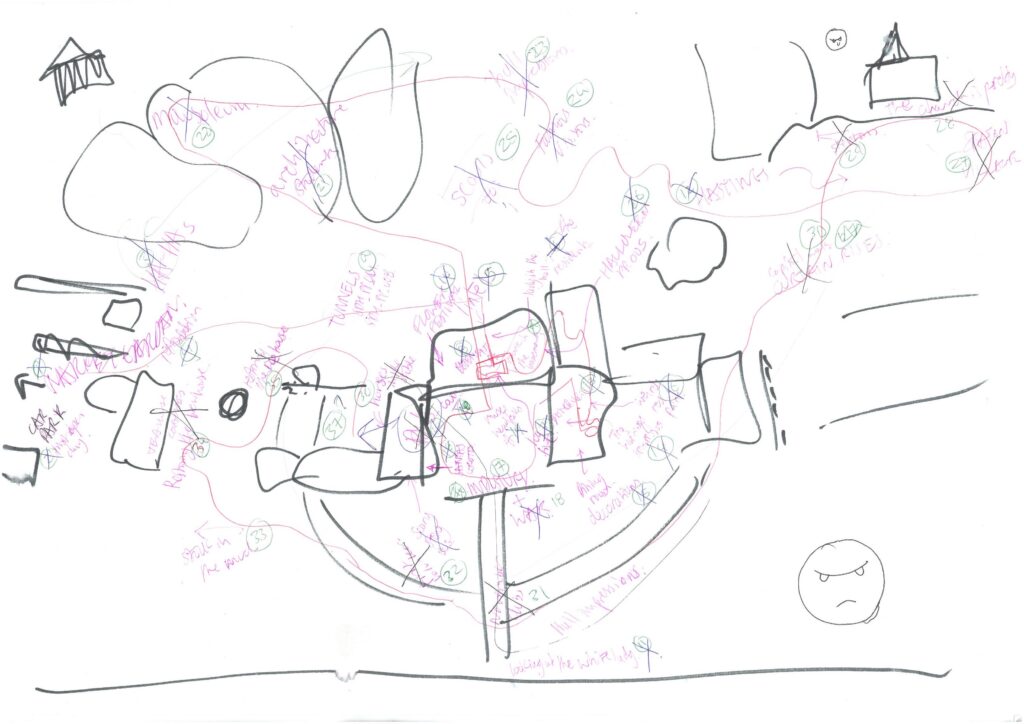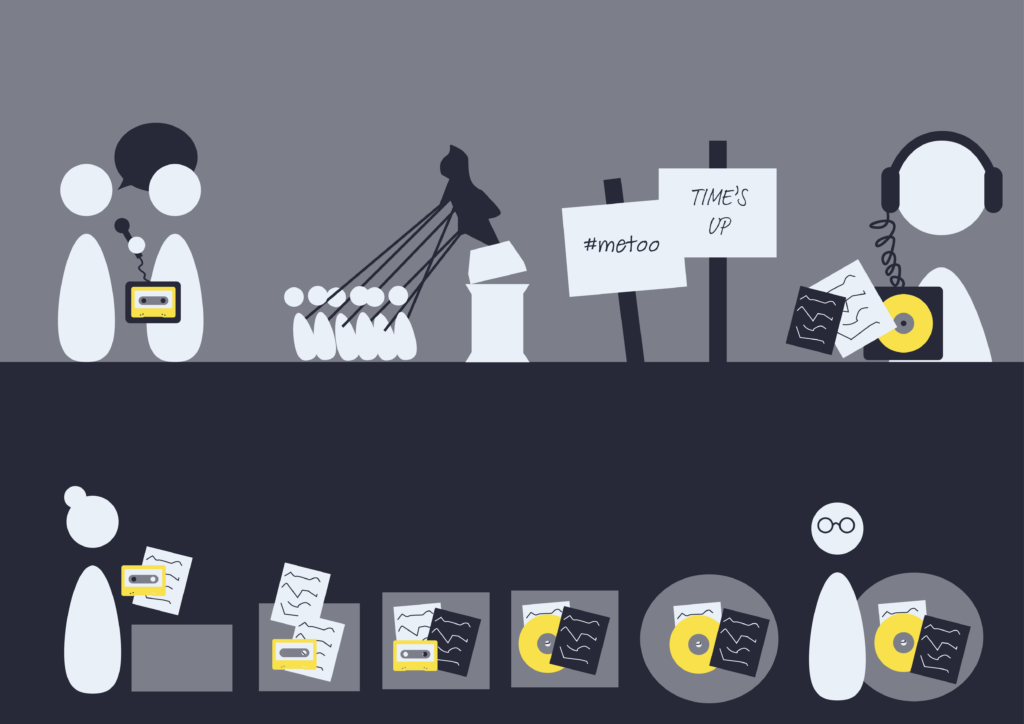NT property recommendations for PhD placement
Hannah James Louwers
21 June 2023
Questions to ask
Would you have good access to the local people who might know of the interviewees?
Are you looking to show how NT should do oral history projects or how they should handle collections of older recordings stuck on shelves?
Properties
Alderley Edge Landscape
Location: Cheshire
Notes on property: They only have two full time rangers and it is a landscape property, not a house so it is unlikely they will have a collections team.
No. of recordings: 80
Main interviewers: John Ecclestone
Date of recordings: Late 1990s – early 2000s
Copyright statues: 17 recordings have copyright and there are a handful of orphan works. Copyright is confusing here, there seems to be focus on getting copyright from the interviewers.
Notes on recordings: Big project in collaboration with the Manchester Museum. There are also several lectures. It also has a website: Alderley Edge Landscape Project (derbyscc.org.uk)
Hannah’s recommendation: ⭐ ⭐ It is one of the biggest projects but because the property is unlikely to have a collections team, you will have no one to champion the work.
Attingham Park
Location: Shropshire
Notes on property: An 18th-century estate. Property ‘Trust’ property. BIG!
No. of recordings: 43
Main interviewers: Edward Payne, Michael Ford, John Ecclestone
Date of recordings: 1960s – 2000s
Copyright status: Half copyright, half not.
Notes on recordings: These recordings came in tranche 5, which was all CDs, many copied from original tapes. Note that some recordings in tranche 5 might be duplicates of recordings in tranche 1.
Hannah’s recommendation: ⭐ ⭐⭐ A lot of recordings taking over a very long period of time. I imagine this might be a difficult one.
Basildon Park
Location: Berkshire
Notes on property: Big 18-century estate. Very ‘Trust’
No. of recordings: 12
Main interviewers: Mary Turton
Date of recordings: 1980s – 2000s
Copyright status: Half have copyright, half does not
Notes on recordings: Many different interviewers
Hannah’s recommendation: ⭐ ⭐ ⭐ ⭐⭐ A small set of recording which might be more manageable for a three month project.
Biddulph Grange Gardens
Location: Straffordshire
Notes on property: It is a garden, so they are unlikely to have collection staff.
No. of recordings: 48
Main interviewers: John Ecclestone, Michael Ford, Bill Malecki
Date of recordings: 1980s – 2000s
Copyright status: 5 recordings have copyright and there are some orphan works
Notes on recordings: Bill Malecki is also the garden and was interviewed
Hannah’s recommendation: ⭐ ⭐ ⭐ This collection might be too big for the three month placement and I am not sure of the staff set up on site. You are likely to have to work with the regional curator.
Blicking Hall
Location: Norfolk
Notes on property: Jacobean mansion with big garden.
No. of recordings: 18
Main interviewer: Nick Ross
Date of recordings: 1980s, and one in 1990
Copyright status: One has copyright
Notes on recordings: Nick Ross did all his recordings in 1986-1987. There is one recording of 11th Marquis of Lothian which was recorded during WW2.
Hannah’s recommendation: ⭐ ⭐ ⭐ ⭐ Small collection but recorded a long time ago which might make things difficult.
Calke Abbey
Location: Derbyshire
Notes on property: Home and estate.
No. of recordings: 41
Main interviewers: Kerry Usher
Date of recordings: 1980s – 1990s (most are unknown)
Copyright status: Many have no accession form
Notes on recordings: Only five recordings were not recorded by Kerry Usher
Hannah’s recommendation: ⭐ ⭐ ⭐ ⭐ This one could be very easy if the property just forgot to give the copyright forms or it will be very difficult.
Clent Hills
Location: Worcestershire
Notes on property: It is a walking route and not an estate, so will not have a collection team
No. of recordings: 11
Main interviewers: Tamsin Mosse
Date of recordings: 2009-2010
Copyright status: One recording has copyright
Notes on recordings: These were recorded onto CDs from a Flash Memory Card by John Ecclestone in 2010
Hannah’s recommendation: ⭐ ⭐ ⭐ ⭐ A more recent one which might make things easier and make up for the fact it is a walking route and not an estate
Clumber Park
Location: Nottinghamshire
Notes on property: Park with a walled garden, a chapel, and ornamental bridge.
No. of recordings: 14
Main interviewers: Leah Lawman, Alistair McDougal
Date of recordings: 1990-91
Copyright status: No copyright at all
Notes on recordings: Classic project run in the early 1990s by the looks of it.
Hannah’s recommendation: ⭐⭐⭐ Could be a good case study because it is clearly a case of an oral history project, which is how many of the NT oral histories will be collected
Coughton Court
Location: Warwickshire
Notes on property: A tudor house in Warwickshire. Classic NT and probably very popular
No. of recordings: 13
Main interviewers: Michael Ford
Date of recordings: 1970s -1980s
Copyright status: One recording has copyright
Notes on recordings: This is a classic early oral history project for NT. Robin Bryer and Michael Ford did some of the earliest recordings for the Trust. Also this one is likely to have duplicates in tranche 5, because tranche 5 consists of CDs made from cassettes. I suspect BL might have some of the original cassettes.
Hannah’s recommendation: ⭐ ⭐ ⭐ ⭐⭐ It is a classic NT oral history project and will be a good example of how to handle material from project long gone by rather than be a good example of how to do contemporary projects.
Dudmaston
Location: Shropshire
Notes on property: Country house still lived in
No. of recordings: 14
Main interviewers: Bill Gatter, Jeremy Milln, Sarah Kay
Date of recordings: 1980s-2010s
Copyright status: No copyright
Notes on recordings: John Ecclestone worked as sound recordings on most interviews. Originally recorded on mini disc but the BL only has the CDS from tranche 5. (Yes, someone was recoding on mini disc in 2012).
Hannah’s recommendation: ⭐ ⭐ ⭐ ⭐⭐ It is a small collection recorded over a wide period of time and none have copyright.
Dunham Massey
Location: Cheshire
Notes on property: Garden, deer park, and a house
No. of recordings: 70
Main interviewers: Peter Lee, James Rothwell
Date of recordings: 1980s – 1990s
Copyright status: One big chunk does have copyright, another chuck have no accession forms, and there are some that have the reuse forms which do not include the word copyright.
Notes on recordings: Many different interviewers.
Hannah’s recommendation: ⭐ ⭐ ⭐⭐ Big collection with everything present but it might be too big for a three month project
Hardwick Hall
Location: Derbyshire
Notes on property: Classic ‘Trust’
No. of recordings: 25
Main interviewers: Tim Whittaker, Alistair McDougal
Date of recordings: 1980s-1990s
Copyright status: No copyright
Notes on recordings: Possibly two different oral history projects one in the 1980s and one in the 1990s
Hannah’s recommendation: ⭐ ⭐ ⭐ ⭐⭐ A classic Trust property with an average amount of recordings.
Monk’s House
Location: East Sussex
Notes on property: Leonard and Virginia Woolf’s 16th-century country retreat. Smaller property
No. of recordings: 12
Main interviewers: Patricia Tate, Malcolm Billings
Date of recordings: 1990s
Copyright status: No copyright
Notes on recordings: Patricia Tate is likely to have died or be over 100 years old. There are also a lot of radio recordings for this property
Hannah’s recommendation: ⭐ ⭐ ⭐ ⭐⭐ A smaller property and collection might be more manageable
Osterley Park
Location: London
Notes on property: House and parkland
No. of recordings: 18
Main interviewers: Jean Price, Gwyneth Learner, Lucy Tusa
Date of recordings: 1989 – 2000s
Copyright status: No copyright
Notes on recordings: Jean Price recorded in 1989, Gwyneth Learner in the 1990s and Lucy Tusa in the 2000s
Hannah’s recommendation: ⭐ ⭐ ⭐ ⭐⭐ A London based property might mean you are able to go and rummage around their cupboards for copyright forms. Also an average sized collection made of three bouts of recordings.
Powis Castle
Location: Powys, Wales
Notes on property: Medieval Castle (not very Trust)
No. of recordings: 21
Main interviewers: Michael Wynne Griffith
Dates of recordings: UNKNOWN
Copyright status: No copyright
Notes on recordings: A very messy collection. Many of the interviews do not have an interviewer noted in the catalogue
Hannah’s recommendation: ⭐ ⭐ A challenge
West Wycombe Village and Hill
Location: Buckinghamshire
Notes on property: Mansion and parkland
No. of recordings: 19
Main interviewers: Olga Macdonald, Alison and Peter Gieler
Dates of recordings: 1990s – 2010s
Copyright status: The more recent recordings one have copyright. The older ones recorded by Olga do not.
Notes on recordings: Olga was later interviewed in the more recent project. I suspect the more recent project was run by volunteers.
Hannah’s recommendation: ⭐ ⭐⭐⭐ The first project does not have copyright sorted but they clearly have sorted everything out for their more recent project. They might be easy to work with if they are familiar with oral history already.
















